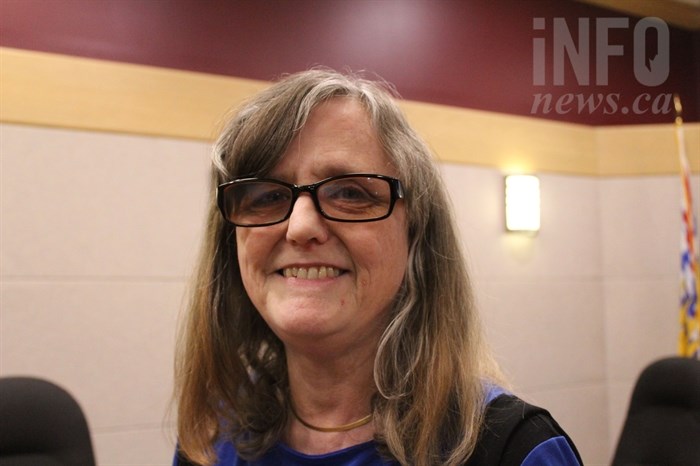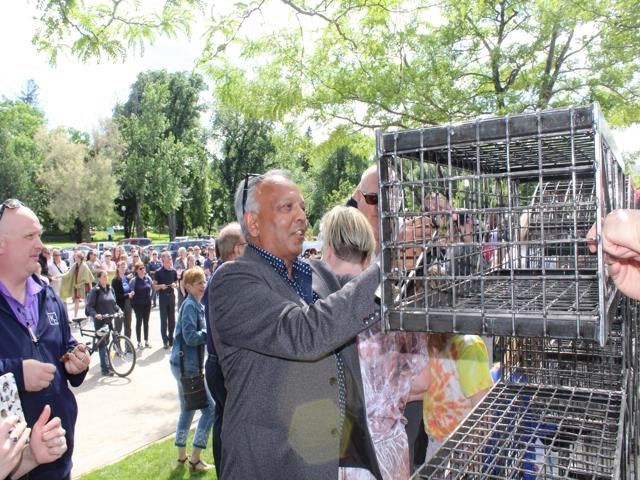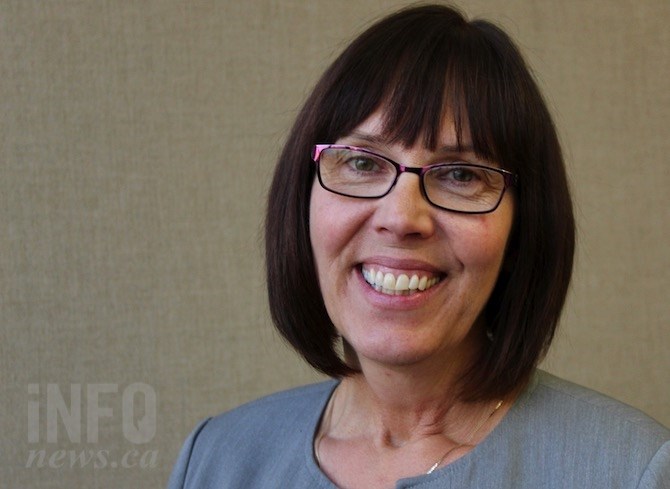
Kamloops City Councillor Dale Bass.
(KAREN EDWARDS / iNFOnews.ca)
March 21, 2022 - 6:02 AM
Even though municipal elections are seven months away, any newcomer hoping to win a council seat should already be on the campaign trail.
The best way to get elected, according to those with experience, can vary in every town and city in the Thompson-Okanagan but some big-city incumbents are in agreement on some key steps needed to make the cut.
READ MORE: Compensation, not term lengths, could determine who runs for city hall in Kelowna, Kamloops
Competition can be fierce. There are usually 20 to 30 people running for the eight councillor positions in Kelowna or Kamloops.
In some place, like Kelowna, incumbents are almost guaranteed re-election but still feel they need to campaign. Kamloops voters are more willing to toss aside those who they believe aren't doing a good job.
Here’s some key strategies.
PUT IN THE TIME LONG BEFORE ELECTION SEASON
“If you’re going to run for any city council position, people have to have a profile,” Dale Bass told iNFOnews.ca. “When you get a ballot with 30 names on it and you (as a voter) haven’t bothered researching because you’re the average Joe or Jane, you pick the names you recognize.”
She, and others like her, got her name recognized on a number of different platforms long before first being elected, in her case, in 2018.
That was after years of working as an editor at Kamloops This Week. That job, the column she wrote and the beats she covered, gave her a step up in terms of name recognition.
But it was more than that. She served on the boards of numerous community agencies.
“Through the United Way, they used to put me on agencies that were in trouble because I’ll go in and say: ‘You’ve got a problem, let’s fix it,’” Bass said. “If you don’t like me, I don’t give a damn, let’s fix the problem so I can move on.”
That fits right in with what Kelowna Coun. Gail Given, who was first elected in 2011, advised.
“My path was through the PACs (Parent Advisory Councils) through the schools and I had quite a broad base through my previous employer, people who know you,” she said. “It’s how you contribute in the community and people know you and your name is out there. To show up at the last minute without any connections, any clubs – you now, Rotary, Chamber (of Commerce), DKA (Downtown Business Association) – those are all really great paths to build a network to people who understand who you are, how you operate and what your passions are.”
Bill Sarai spent 31 years getting to know Kamloops residents by delivering their mail. He took his first shot at council in an October 2017 by-election, finishing fifth out of 21 candidates running for two positions.

Kamloops City Councillor Bill Sarai.
(JENNA WHEELER / iNFOnews.ca)
“I’m a community-minded guy,” he said. “As a mailman I always took extra care of my customers, always went the extra mile even if it’s coming back after I did my route to help somebody out.”
He was involved with youth soccer both with the association and as a coach, volunteered for summer and winter games events, was on a Canada Social Planning Council and the Sikh Cultural Society.
His plan in 2017 was to use that as a training exercise and to get his name better known in the community.
Those efforts paid off. A year later, he squeaked into the final spot on council by finishing eighth, ahead of Ray Dhaliwal, who won one of the seats in 2017.
Kathy Sinclair took a similar but shorter path. She topped the polls in the 2017 by-election then got re-elected in the 2018 general election, having only been a Kamloops resident since 2011.

Kamloops City Councillor Kathy Sinclair.
Image Credit: SUBMITTED/Facebook
“I moved here without a job and I just started volunteering,” she said. “I realized volunteering, in addition to giving me something to do while I was looking for work, was also a great way to network. Kamloops is of a size that, once you starting getting out there and volunteering and getting to know people, it really becomes quite small because you run into the same people a lot.”
Sinclair did get a job and became executive director of the Kamloops Art Council at a time when they were campaigning for a new performing arts centre. She had a board that wanted her to get her face out in the community. That led to media exposure that increased her name recognition.
SIGNS
“I got some signs, not many – I think I ordered 500 lawn signs and a couple of big ones,” Sarai said of his first campaign in the 2017 by-election.
His fifth place finish that year led to community support and donations that allowed him to buy even more signs going into the 2018 campaign, including 21 large eight-foot by eight-foot signs.
“I was the first out of the gate to get my signs up, that really helped,” Sarai said. “Everybody said I had the most signs that any candidate’s ever seen in Kamloops.”
After that, people could walk out of an all-candidates forum, see his name on the sign and make a connection to the man they heard speaking inside.
READ MORE: Andre Blanleil pondering another run at Kelowna city council; Who else?
Do signs really work?
“I think signs work, if for no other reason than it shows you’re serious,” Sinclair said. “You have to compete with everybody else who’s got signs out there.”
Even Kelowna’s longest serving councillor, Luke Stack (first elected in 2008) keeps putting up signs every year, although he's had the luxury of reusing his signs for, so far, four campaigns.
SOCIAL MEDIA
Brad Sieben won election in 2014 and re-election in 2018 by being one of the biggest spenders on the campaign trail, in the range of $20,000 to $30,000 each campaign.
He’s a big believer in the importance of putting a good part of that money into social media
“The world has changed with social media and ground swells can get picked up fairly aggressively with some people,” Sieben said. “It’s more than putting signs in the lawn now. You can get a lot of momentum on social media.”
There was a 2019 petition campaign in Kelowna that drew almost 13,000 local signatures opposed to a supportive housing complex, which showed how a community can be quickly galvanized around a single issue.
“Social media is pretty important for sure,” Sinclair said. “It’s one thing to go out to all these different events but, being able to document and show you were there and doing some live videos and posting photos just keeps you top of mind in young people’s heads as well.”
She didn’t do much Twitter and no TikTok but suggested, if candidates want to engage younger voters, they’re going to have to build a presence on TikTok.
Many of the incumbents are not very active on social media between elections but one who has quite a presence at all times is Kelowna’s Ryan Donn.
“Ryan Donn is extremely skilled at social media,” Sieben said. “That’s a big advantage. Anyone else who wanted to go up against someone like Ryan, to have the same sort of social media profile and marketing presence, likely has to pay someone to do that. That’s what changed. Social media is a big thing and, if you want to compete with those in there, if you think you need to, you’re likely paying someone to help you do it.”
ANSWER THE QUESTIONS
Gord Lovegrove, a UBCO engineering professor in Kelowna, was a virtual unknown when he ran for council in 2018 but managed to finish ninth in a field of 14 who were vying for the one opening on council (seven of eight incumbents ran for re-election, which is almost a guaranteed win in Kelowna).
“I ask people, how come I almost made it?” he said, after telling iNFOnews.ca he’s running again. “I came out of nowhere. I think it’s folks, like you (in the media), asking the pointed questions and letting us each respond.”
Of course, voters have to read and evaluate those responses if they are going to have any impact.
“It’s going to be kind of a joint exercise here – us getting out there, taking the risk of telling people who we are – but, they (voters) also do have to make the effort to get to know us and evaluate us,” Lovegrove said. “Read our responses. Compare our responses.”
That tactic also ties in with the ever-growing importance of social media.
“Here in Kamloops, all the different groups, whether it’s climate action, pet lovers, the wildlife park, so many different groups sent every councillor their own questionnaire on where they stood on certain issues,” Sarai said. “That was huge because, if you didn’t fill one of those out, when they’re on social media they would let the public know that we reached out to these councillors and they would name the councillors that hadn’t replied yet.”
DOOR KNOCKING
This gets mixed reviews.
Lovegrove has started door knocking already in Kelowna, arguing that it has worked well for former councillor and current Kelowna-Lake Country MLA Norm Letnick.
Bass hand-delivered her brochure to hundreds of Kamloops homes in 2018. Many other elected officials do some degree of door knocking but it’s not top of their list of campaign strategies.
Given used to help her husband, Brian, door knock when he was on council and he found that effective but she hasn’t continued the practice for herself.

Kelowna City Councillor Gail Given.
(ROB MUNRO / iNFOnews.ca)
“Door knocking was mostly about delivering pamphlets and brochures,” she said. “Social media delivers them so much faster and, with websites, they are so much more effective ways to get to people.”
ADVERTISE
Sinclair noted that, like signs, spending some money on advertising does show a level of commitment to the campaign but it’s not something many mentioned as part of their strategies.
“The best advertising campaign for yourself is all the work you’ve done between elections,” Given said.
SPEND MONEY
Back in the 1990s, in Kelowna, people like Ben Lee and Robert Hobson spent little or no money on their campaigns and still finished at or near the top of the polls in most of the many elections they entered.
That was in the days when they were very well known and the city was much smaller.
So incumbents are, now, all spending some money on campaigns but the amount spent had no direct correlation to the number of votes they got in 2018.
READ MORE: Kamloops business owner announces intention to run for mayor
Maxine DeHart topped the Kelowna polls in 2018 by spending only $4,800 while Given came a close second after spending $11,200.
Sieben was the biggest spender among the incumbents at $18,460 and came in fourth while Donn spent $12,000 and finished seventh. Charlie Hodge finished one spot and 1,200 votes ahead of Donn and only spent $3,450.
Loyal Wooldridge won the only “open” seat in Kelowna. While he was the biggest spender at $23,300, he also put the time in by attending every city council meeting for a year leading up to the election as well as building a community profile. (Mayoral campaigns are a whole different animal; Kelowna Mayor Colin Basran spent nearly $80,000 on his 2018 campaign.)
When it came to those who didn’t get elected, the amount spent didn't dictate the order of finish but did have some impact. Lovegrove paid out almost $15,000 and finished ninth while Amarjit Singh Lalli spent $18,830 to finish two places and 2,000 votes further back.
Other big spenders included Dustin Sargent ($8,200 for 12th place) and Mark Boyer ($7,063 for 15th place) out of a field of 21.
In between those two men, Lindsay Bell was 13th but only spent $628 while Craig Hostland finished one place behind her, spending but just under $300.
Going into a possible third term, Sinclair estimated she would need to spend $10,000 for a campaign, even though she is an incumbent.
Mohini Singh is the only sitting Kelowna councillor, so far, to declare she is running. If she wins, it will be her third consecutive term.
“You always have to run like you’re one vote short, if not 10 votes short,” she said. “Once the campaign begins, you have to give it your best to get your message out to the public. You have to reach out to the public and let them see who you really are as a person, as a leader, and if you’re the kind of person they want to see in office.”
To contact a reporter for this story, email Rob Munro or call 250-808-0143 or email the editor. You can also submit photos, videos or news tips to the newsroom and be entered to win a monthly prize draw.
We welcome your comments and opinions on our stories but play nice. We won't censor or delete comments unless they contain off-topic statements or links, unnecessary vulgarity, false facts, spam or obviously fake profiles. If you have any concerns about what you see in comments, email the editor in the link above.
News from © iNFOnews, 2022